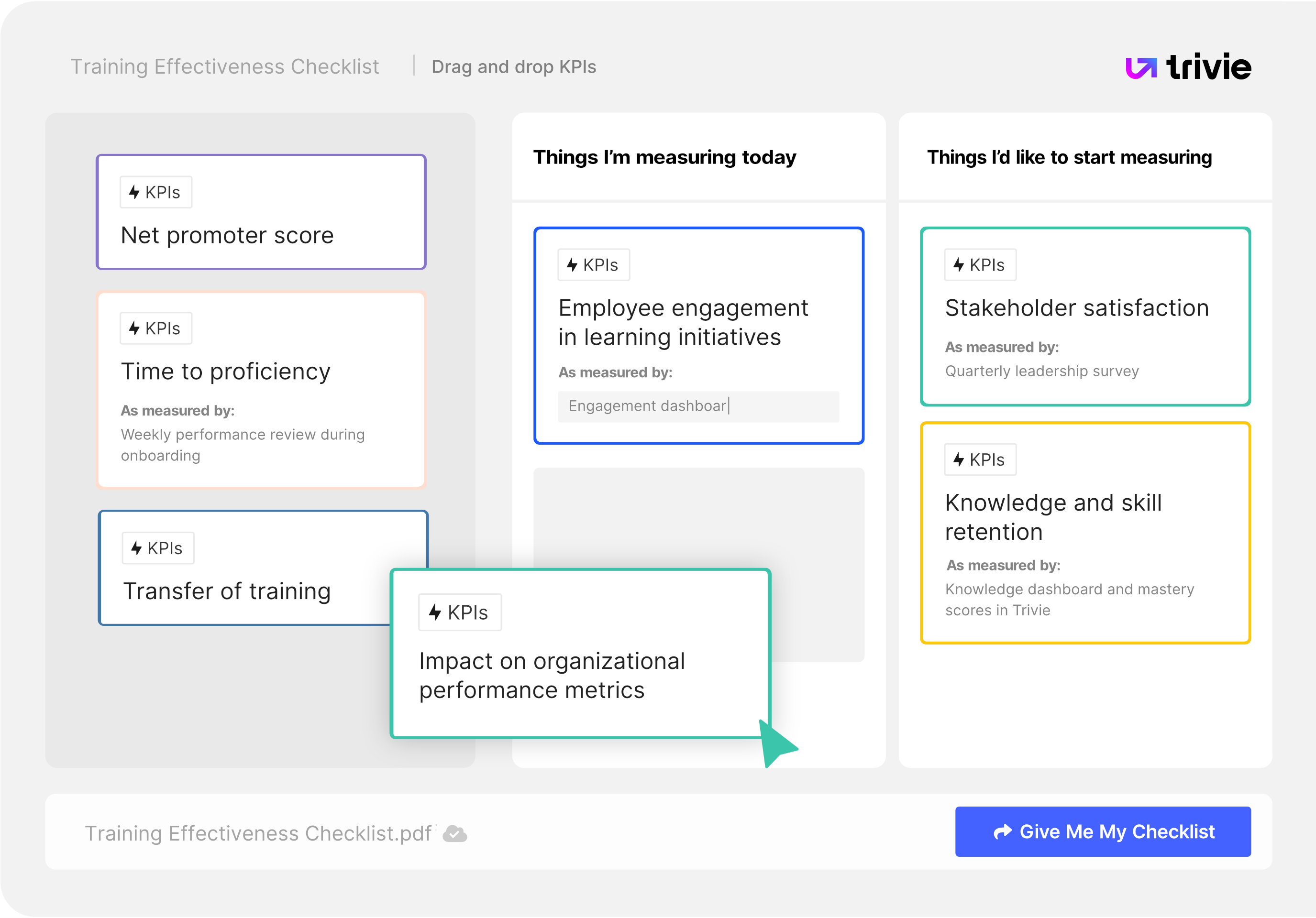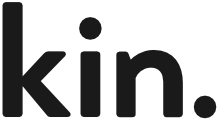

Those measures help identify opportunities for improvement and create an accountability system that can ripple throughout your organization. Arming yourself with the data to identify skills, knowledge, and application gaps allows you to collaborate with leaders at every level and become a proactive business partner who can get ahead of risks and drive productivity, all of which contributes to the growth of your organization, your people, and your career.
Getting started can be overwhelming; the systems, the data points, and even the outcomes! Where do you start? In collaboration with learning leaders like yourself, we created this checklist that includes KPIs to help get you started.

Determining your training KPIs is the first step in measuring your training effectiveness. Being selective is important for this step, the more data the better, but don’t overwhelm yourself with too many data points.
"If you are a learning leader, you are likely familiar with the saying, 'what gets measured gets done’. Stakeholders and the C-Suite, now more than ever, are expecting a measurable return on investment for every investment. Know what KPIs matter most -- even if that is only 2 or 3.” ~ Lacey Hedrick, Head of Talent Development - Tungsten Network
Here are 7 KPIs to get you started; over time you’ll know more about what you’d like to measure as your program progresses:
“Once you are able to talk their language (finance) with proven outcomes, the rest will follow as your stakeholders pay more attention." ~ Lacey Hedrick, Head of Talent Development - Tungsten Network
Asking learners how effective their training was provides you with instant feedback from those directly experiencing your training materials and format. You can find sample surveys online (Talent LMS, Qualtrics) to kickstart this process for general feedback or come up with your own questions related to the learning goals you determined during training program development. These surveys can be built with free tools like Google Forms, Survey Monkey, or even Trivie’s own survey functionality.
A common assessment model to refer to when developing these surveys is the Kirkpatrick Evaluation (as shown below) or any of these trusted by many companies today: The Phillips ROI Model, Kaufman’s Five Levels of Evaluation, Anderson’s Model of Learning Evaluation, Summative vs. Formative Evaluation
In the 1950s Donald Kirkpatrick developed the Kirkpatrick Evaluation Model for evaluation training. This 4-level approach helps you measure the effectiveness of corporate training programs. These are the four levels of measures and the key indicators you should consider for each level:
Level 1: Reaction of learner
What they thought and how they felt about the training:
Level 2: Learning
The measurement of the increase in knowledge or intellectual capability from before to after the learning experience:
The extent to which learners applied the learning and changed their behavior, this can be immediately or several months after the training:
Level 4: Results
Is the effect on the business or environment resulting from the improved performance of the learner?
Volumes, values, percentages, timescales, ROI, or organizational performance: number of complaints, staff turnover, attrition, failures, wastage, non-compliance, accidents, quality ratings, achievement of standards and accreditations, growth, retention, etc.
Establishing a system of reporting for learner training is important for your continued use of the training methods you have deployed. Organization stakeholders should be given the opportunity to review the results of training as it pertains to company performance and training program ROI.
Here are some reports to consider using to measure effectiveness:
Segmentation: It’s important to think about what unique audiences you’re measuring and reporting across. Is it by location? Department? Manager? Topic? All of the above? Think through the most common ways that other reporting is already segmented across your organization and use that as a starting point.




